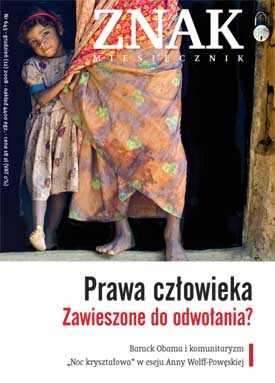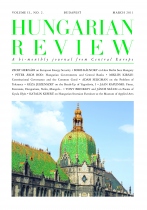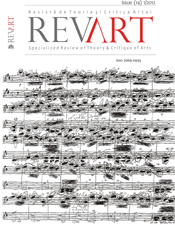
We kindly inform you that, as long as the subject affiliation of our 300.000+ articles is in progress, you might get unsufficient or no results on your third level or second level search. In this case, please broaden your search criteria.


Little Arthur Duncan – Live At Rosa’s Lounge Clarence Spady – Just Between Us Phil Brown – The Jimi Project Alabama Slim & Little Freddie King – The Mighty Flood
More...



Little Arthur Duncan – Live At Rosa’s Lounge Clarence Spady – Just Between Us Phil Brown – The Jimi Project Alabama Slim & Little Freddie King – The Mighty Flood
More...


Rappers from a Czech minority gain majority appeal with a fusion of sounds and introspective lyrics.
More...
The voluminous creative opus of the prominent Macedonian composer and pedagogue Vlastimir Nikolovski encompasses almost all genres and forms characteristic for the professional compositional creation of the second half of the XX century. In the course of his prolific creative life the author was drawn with equal intensity to large, massive, voluminous as well as to plastic, mobile, character-driven and as to the timbre in a refine manner combined performing compositions. Equally characteristic to his creative profile is the interest for the instrumental color and the constant returning to the national folkloristic and church coloration and manner in the vocational opus. The author has addressed the genres of the vocal-instrumental music not just once. Within each of them he created works that have assured for themselves place as representative creations in the national compositional treasury - "To Clement", "To Cyril", "Insubordination", the cantatas " Sun column", "Piquancy", "The Serdar", "Antiliturgy", the vocal cycles "Through the roads" and "Satyr 2" the fifth symphony, the many choral compositions, the cycles and songs for man and female voices accompanied by piano. In all of them the rich poetic and dramatic line of his many-sided talent is expressed as well as his faculty for deep feeling and theatricalising of the poetic text, for empathy with its dramaturgic line, which stands out clearly in his not yet published poetic work, prose texts and drawings.
More...
Обемниот творечки опус на истакнатиот македонски композитор и педагог Властимир Николовски ги вклучува речиси сите жанри и форми својствени на професионалното композиторско творештво во втората половина на ХХ век. Авторот во текот на плодниот творечки живот со еднаков интензитет го привлекуваат крупни, масовни, волуменозни но и пластични, подвижни, карактерни, тембрално на рафиниран начин комбинирани изведувачки состави. На неговиот творечки профил подеднакво му е својствен и интересот за инструменталната боја и постојаното навраќање на националниот фолклорен и црковен колорит и манир во вокалниот опус.
More...
On the Occasion of the 200th Anniversary of the Birth of Ferenc Liszt
More...
The verification of the human projective mechanism occurs through the confrontation amongst the most variegated systems of values, not only among the complementary ones. What happens when the value of the masterpiece much exceeds the audience’s taste and aesthetic ideal? The human being’s transformation implies a permanent verification of the “being” of the music; whilst listening Beethoven’s 9th Symphony, the receiver is attracted as a magnet towards re-listening to it. Through this continuous psychological “confrontation”, the being is projected in rendering specific the contemplated object. However, of our days, a change of paradigm occurred: the psychological confrontation is no longer focused on the contemplated object, but on the margins, on what wraps it: on the scientific conduct of the object. The enthusiastic transition towards our times even more emphatically avers a discontinuance from the conception of “normality” of the classical artist or of the Beethoventype artist, replacing their behaviours with those of the “modern” artist. The latter pre-eminently wishes for the state of intellectual diffusion, for multiply approaching the knowledge fields: artistic and scientific altogether.
More...
The social factor has always been attributed to entertainment music because from ancient times there has been the need for music to address a recipient not necessarily educated, but willing to find himself in the artistic act and to search for a direct way, open, convincing significant , which includes opportunistic ways, appropriate to the times, of transmitting feelings. In the 21st Century the borders are no longer found especially in the examples I suggest: Cadence interpretation of Concert nr. 3 for orchestra and violin by Wolfgang Amadeus Mozart interpreted by violinist Gilles Apap.
More...
Mozart was a great piano virtuoso who dedicated most of his creation to the pianoforte, the youngest emerged musical instrument at his time. Either playing a modern piano or, out of concern for historical authenticity, an eighteenth-century pianoforte, the piano player of our days must first and foremost pursue and accomplish the beauty and sensitiveness of the melodic phrasing, together with the utterance clearness. With a view to his succeeding in drawing nearer to Mozart’s specific nature, the pianist needs an overview of the creation engendered by the one who embodied the ideal of classical music and whose name merges with music itself.
More...
The architecture of the Sonatina for Piano and Violin by Dinu Lipatti (1933) includes sections that refer to other (pre)classical formal patterns: the first part includes a treatment in the polyphonicimitative spirit of an invention, and the other two parts join in a theme with variations. A quasi-cyclicity unites the themes of the overall work. Moreover, the sonatina stands out through the concentration of the form and language, through the thematic and architectonic precision and clarity, following the path opened a decade ago by Marţian Negrea, with his Sonatina for Piano (1922).
More...
We have presented in this article some aspects of the vocal and choral creation of Dan Constantinescu, one of the most important composers and teachers of Romania. The Symphony for 32 voices, a choral piece which was written in serial techniques, as the most part of his symphonic and chamber music, was mainly analysed.
More...